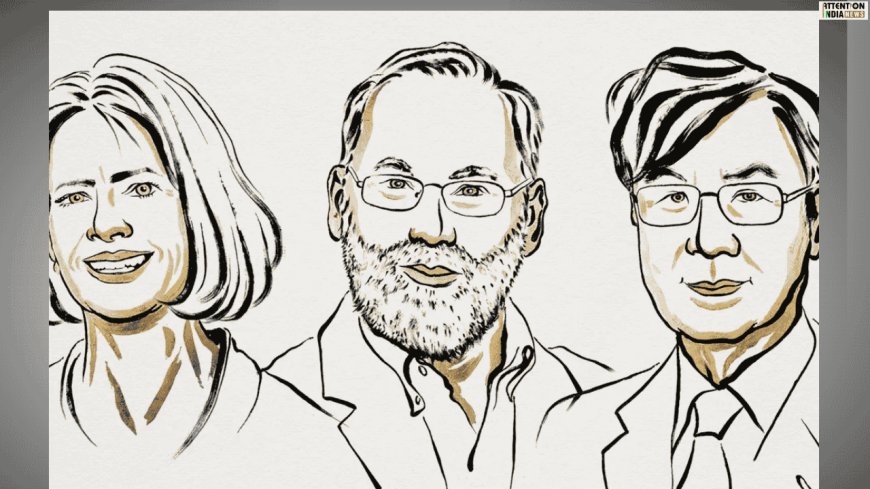Three Scientists Win 2025 Nobel Prize in Medicine for Discoveries on Immune System’s Self-Regulation
Three scientists have won the 2025 Nobel Prize in Physiology or Medicine for their research on how the body's immune system is kept from attacking.

New Delhi (India) October 7: Mary E. Brunkow, Fred Ramsdell, and Shimon Sakaguchi have been given the 2025 Nobel Prize in Physiology or Medicine. It is for their ground-breaking findings. The findings clarify how the body's immune system functions in order to stop it from attacking its own organs.
The 2025 Nobel Prize in Medicine honors three researchers whose joint discoveries have changed the fight against immune-related disorders. It has given millions of people hope who suffer from inflammatory and autoimmune diseases around the world.
The Prize Awarding body said, “Their discoveries have laid the foundation for a new field of research and spurred the development of new treatments, for example for cancer and autoimmune diseases,” in an official statement.
Announcement Made by Sweden’s Karolinska Institute
The three will get the honor in December for "their groundbreaking discoveries concerning peripheral immune tolerance that prevents the immune system from harming the body". This is as per a Monday announcement from Sweden's Karolinska Institute.
The 11 million Swedish kronor ($1.17 million) reward will be split equally between Sakaguchi of Japan, and Brunkow and Ramsdell of the United States.
Key Discoveries That Changed Immune Research
The award this year was for figuring out the mechanism and essential components of "peripheral immune tolerance." The laureates recognized regulatory T cells. They are the immune system's security guards that stop immune cells from attacking our own bodies.
In 1995, Shimon Sakaguchi made the first significant finding. Many experts at the time believed that immunological tolerance only emerged as a result of the central tolerance mechanism. It eliminates potentially dangerous immune cells. Sakaguchi identified a previously unidentified class of immune cells. They shield the body from autoimmune diseases and reveal the complexity of the immune system.
The other significant finding was made in 2001 by Mary Brunkow and Fred Ramsdell. They explained why a particular strain of mice was more susceptible to autoimmune disorders.
They had identified a gene mutation in mice. They called it Foxp3. It also demonstrated IPEX as a severe autoimmune illness. It was brought on by mutations in the human version of this gene.
Global Importance of the Nobel-Winning Work
Shimon Sakaguchi was able to connect these findings two years later. He proved that the Foxp3 gene controls how the cells he discovered in 1995 develop. These cells are now referred to as regulatory T cells. They keep an eye on other immune cells. They also make sure that our body's defenses against disease accept our own tissues.
The discipline of peripheral tolerance was established by the laureates' findings. It also increased the creation of cancer and autoimmune disease treatments. Additionally, this might result in more effective transplants. Clinical trials are now being conducted on a number of these medicines.
Background of the Three Prize Winners
Mary E. Brunkow is a Ph.D. graduate of Princeton University in the United States. She is a Senior Program Manager at the Institute for Systems Biology in Seattle. Fred Ramsdell got his Ph.D. in 1987 from the University of California, Los Angeles. He is now Scientific Advisor at Sonoma Biotherapeutics, San Francisco. Shimon Sakaguchi is a professor at the Immunology Frontier Research Center at Osaka University. He received his M.D. in 1976 and Ph.D. in 1983 from Kyoto University in Japan.

 Aadrika Tayal
Aadrika Tayal 





